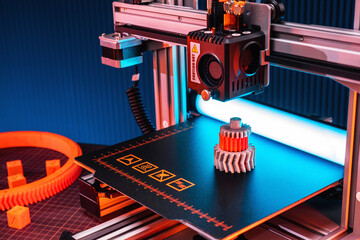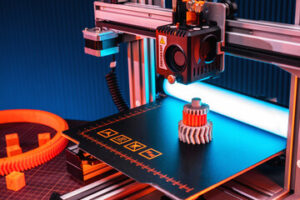Air Duct Cleaning Salt Lake City is a complex job best left to professionals. It requires advanced knowledge of HVAC systems, as well as specialized tools to get the job done right.
Dirty ducts can breed microbes and mold that cause stale odors in the home. Cleaning the ductwork eliminates these odor sources, and prevents them from recirculating throughout the house.
Air ducts perform a vital function: they circulate heating and cooling system air throughout the home or business. This is the same air that gets blown onto your furniture, bedding, and floors, and that you and your family breathe every day. Over time, this air can pick up all sorts of contaminants like pet dander, dust, mildew, pollen, and chemicals. As these pollutants move around the house, they get pulled into the HVAC system and recirculated five to seven times a day. If not trapped by the system’s air filter, they can clog the ductwork and escape into the living space, where they can cause health problems for those with respiratory illness or auto-immune disorders.
A regular cleaning of your ductwork helps to eliminate these pollutants and keeps them from being blown back into the home. Air duct cleaning involves accessing the ducts, vents, and registers in each room of the house. High-powered vacuums then remove all of the accumulated dust and debris. The process also removes odors from the ducts, such as those caused by pets, smoking, cleaning agents, paint fumes, and old cooking smells.
While air duct cleaning reduces visible dust and dirt, it doesn’t address bacteria, viruses, or other microscopic organisms that might be lurking in the system. To do this, a trained and certified air duct cleaner will apply a sanitizing agent to the interior surfaces of the ductwork. This treatment kills the organisms and prevents them from growing, ensuring that your air is not only clean but hygienic as well.
Before the cleaners arrive, it’s a good idea to move any fragile items from the area where they will be working. This will make it easier for the cleaning team to reach the vents and registers, and prevent damage to your belongings. You should also turn off the HVAC system and open windows to minimize dust and odors during the cleaning process. If you have children or pets, consider keeping them away from the work area as well. They may be stressed by the noise, equipment, and unfamiliar people in their space.
Better Indoor Air Quality
Air quality is a key aspect of home comfort and health. A healthy indoor environment helps prevent allergies, asthma attacks, respiratory infections and other illnesses. It also makes you and your family feel better.
A major factor influencing indoor air quality is your HVAC system. Dirty ducts cause the system to work harder than necessary, increasing energy consumption and costing you money. A regular cleaning and maintenance plan can keep your ducts in good condition, reducing energy costs and improving air quality.
Duct cleaning removes dust, dirt and other debris that can build up over time and clog your heating and cooling system’s filters. The resulting clean air can then be circulated throughout your entire house.
It also reduces odors. Over time, pet dander, household cleaning products, paint fumes and tobacco smoke can build up inside your ductwork, leaving behind unpleasant or even toxic odors. These odors are carried in the air during your HVAC system’s operation and can cause you to breathe them in repeatedly. A thorough duct cleaning removes these pollutants, making your home smell fresher and cleaner.
Poor indoor air quality is particularly harmful to infants, children, elderly adults and people with existing respiratory conditions. It can also lead to eye irritation, headaches and nose and ear congestion.
The main sources of air pollution in your home include volatile organic compounds (VOCs), which are found in many household products including paint, cleaning supplies, glues, sealants and air fresheners; and particulate matter, which can be found in dust, pollen and pet dander. Other causes of poor air quality include outdoor pollutants, secondhand smoke and excessive moisture that supports the growth of mold and mildew.
As you can see, there are plenty of benefits to getting your air ducts cleaned by an experienced professional. The best way to make sure you’re working with a trustworthy and competent technician is to find one who is certified by the National Air Duct Cleaning Association (NADCA). Only those with the Air Systems Cleaning Specialist certification or the Certified Ventilation Inspector credential are qualified to properly inspect, clean and maintain your home’s ductwork.
Reduced Energy Bills
Air ducts are a necessary component of your heating and cooling system. They provide an important function of circulating air throughout your home, keeping it at a comfortable temperature all year round. But over time, your ductwork can become contaminated with dirt and debris that leads to diminished air quality, increasing energy bills. Having your ductwork regularly cleaned will eliminate these contaminants and increase your HVAC system efficiency, reducing the amount of money you have to spend on your energy bill.
The main source of dust in your ductwork comes from household furnishings and other sources, such as carpets, draperies, pillows and mattresses. When air passes through the ductwork, it can also collect pet dander, pollen, mildew and growth spores, all of which are known triggers for allergy and asthma symptoms. Air duct cleaning helps remove these triggers, making it easier for families with respiratory problems to breathe.
Dirty ducts can cause your system to work harder to heat or cool your home, causing it to wear out faster. By having your ducts cleaned regularly, you can extend the life of your heating and cooling systems, saving you money on repairs.
Before the technicians arrive, you should clear out any furniture, rugs or other large items that may block access to your vents and air ducts. This allows them to get to work without having to move your belongings, which is much quicker than doing it yourself. You should also map out where your air vents and ducts are located so they can access the entire system.
Air Duct Cleaning is a complicated task that requires advanced knowledge of your heating and cooling system and specialized tools. It is not something that should be attempted by DIYers. Instead, search the NADCA directory to find an experienced professional in your area. NADCA members have the knowledge and expertise to clean your ducts effectively and safely, and they follow high standards for customer service.
It is recommended that you have your ducts cleaned every three to four years. Depending on the size of your home and the frequency of use, more frequent cleanings may be needed.
Increased Home Value
Homeowners who choose to have their air ducts cleaned can expect to increase the value of their property when they decide to sell. Air duct cleaning helps ensure that a home is free of pollutants, which can improve indoor air quality and help prevent health issues for family members. The EPA estimates that indoor air pollutants are two to five times higher than outdoor pollution levels, which can be particularly dangerous for people with respiratory conditions.
Regular duct cleaning can remove dust and allergens that accumulate in the ventilation system, allowing it to operate more efficiently. It also removes odors that may have built up over time, and can help ensure that the heating and cooling system is working properly. These factors can increase a home’s energy efficiency, which can lead to lower utility bills.
Proper air duct cleaning requires special equipment that is designed to handle the ductwork systems found in Syracuse homes. In addition to having specialized equipment, air duct cleaners should be trained in proper procedures. Careless or improper cleaning can damage a homeowner’s HVAC system or ductwork, causing costly repairs or replacements.
Additionally, homeowners should ensure that their ducts are easily accessible for cleaning. This means that any furniture, rugs or large items that are blocking the vents should be moved before the cleaning crew arrives. Moreover, homeowners should map out where their air vents are located so that the service professionals can easily access them without having to move anything themselves.
In conclusion, while air duct cleaning can be a great way to boost a home’s value, it’s important for homeowners to understand how it works before investing in the process. In addition to improving a home’s indoor air quality, regular duct cleaning can also protect the integrity of the HVAC system and prolong its lifespan. This is especially important for homeowners who plan to sell their homes in the future. Proper air circulation can help to reduce the likelihood of damage to wires, insulation, wood framing and flooring, and even wallpaper. It can also protect a home’s carpeting, helping it to last longer and look better.


